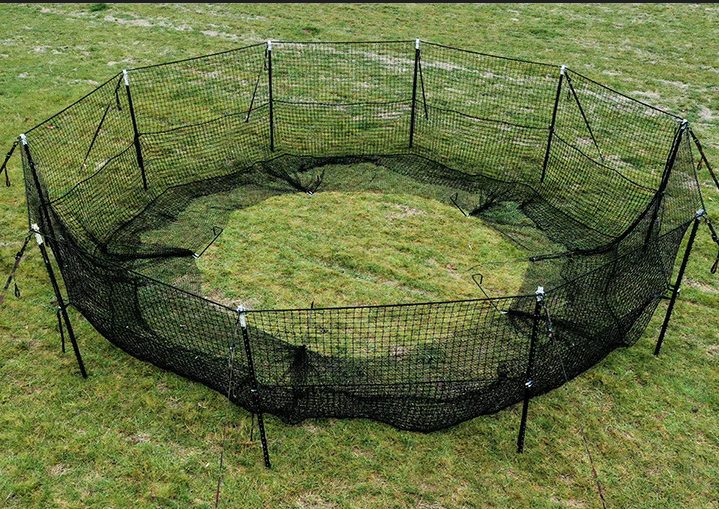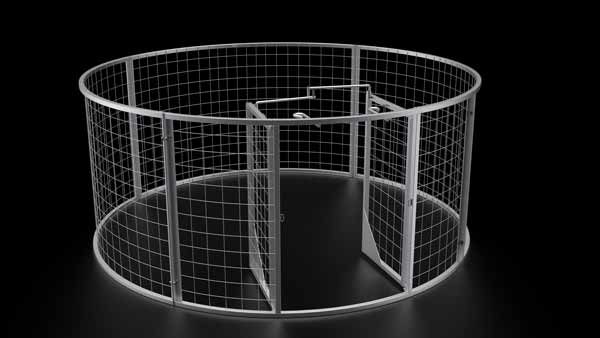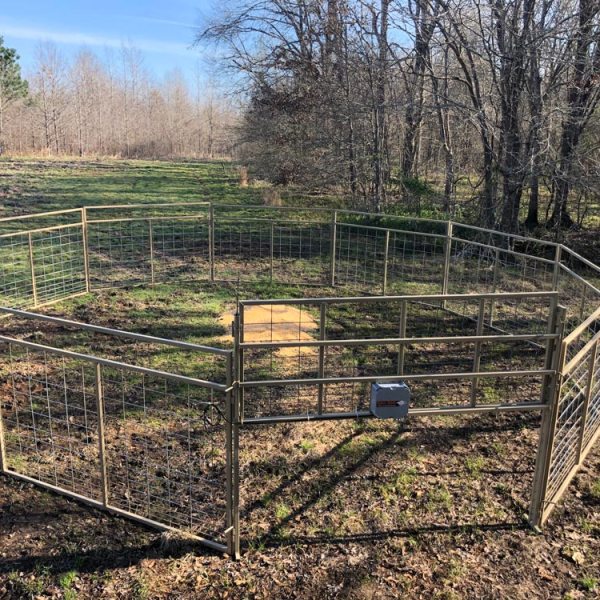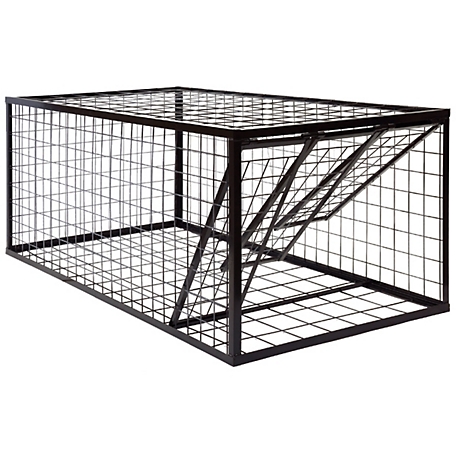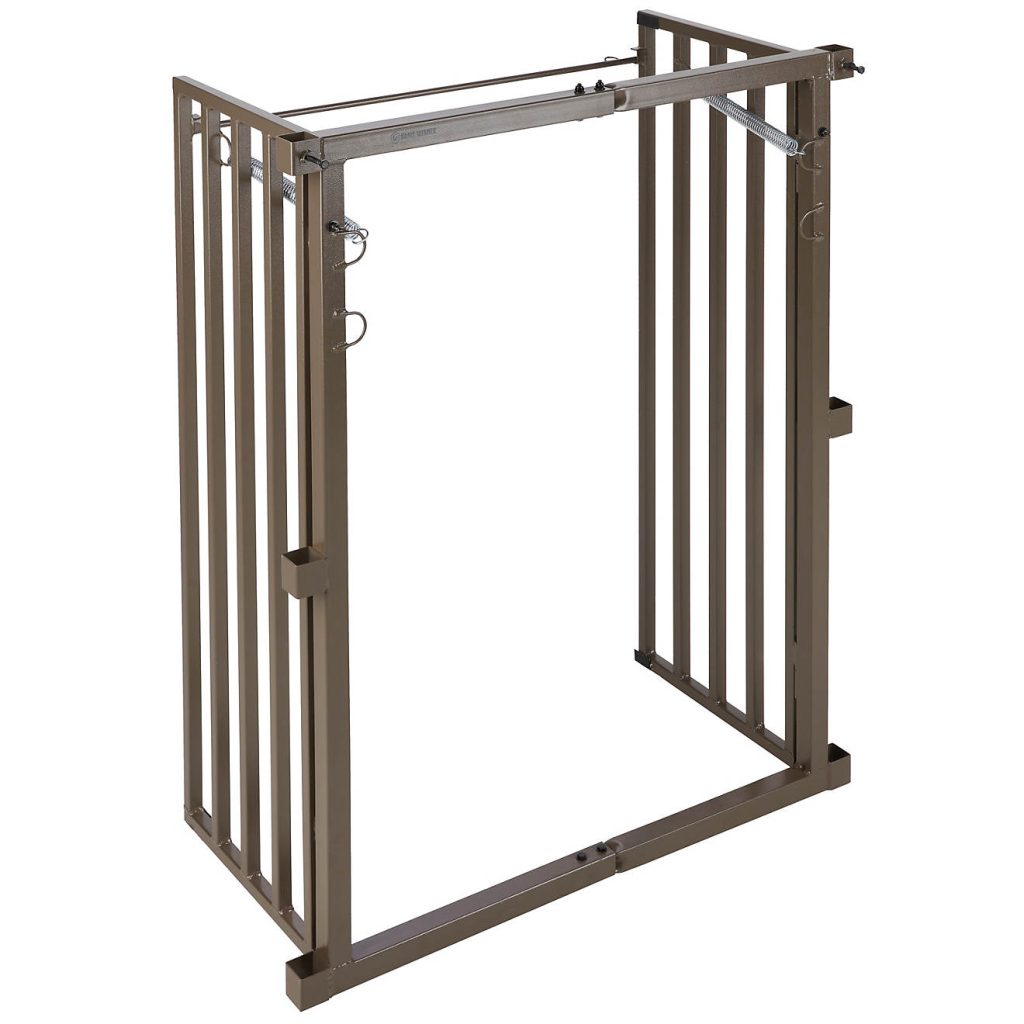In recent years, the rise of feral hog populations has become a pressing concern for landowners throughout the country. These highly adaptive and destructive creatures have proven to be a significant menace to ecosystems, agriculture, and public safety. Their destructive foraging habits, voracious appetites, and remarkable reproductive capabilities have earned them the reputation of being one of the most invasive and destructive species on the continent. As the population of feral swine continues to expand rapidly, it has become increasingly important to implement effective control measures to curb their impact. Among the various strategies available, hog trapping has emerged as a prominent and humane method to manage these invasive animals. By utilizing hog traps specifically designed to target feral swine, landowners, farmers, and wildlife managers can significantly mitigate the threats posed by these destructive creatures.
- Before you Set Your Hog Trap: Facts About Wild Hogs
- Common Hog Trap Designs
- Commercial Hog Traps
- What Is The Best Time Of Year To Set Hog Traps
- Where To Set Hog Traps On Your Property
- What Is The Best Bait For A Hog Trap
- How Often Should You Check A Hog Trap
- Hog Trapping FAQs
- Final Thoughts On Hog Trapping
Before you Set Your Hog Trap: Facts About Wild Hogs
Wild hogs (Sus scrofa, also known as feral pigs or boar) trace their lineage back to domesticated pigs that escaped or were intentionally released into the wild. Originally introduced by European settlers, these adaptable creatures have since expanded their range to various continents, thriving in diverse habitats such as forests, swamps, grasslands, and even urban areas.
Wild hogs boast an impressive and intimidating appearance. They possess a robust build, characterized by muscular shoulders, a prominent snout, and sharp tusks that can inflict significant damage. Their coats range in color from dark brown and black to reddish or gray, featuring bristly hair and a thick hide that provides protection against predators and the elements.
One of the most astonishing aspects of wild hogs is their adaptability. They possess a remarkable knack for survival, exhibiting behaviors that allow them to thrive in a wide array of environments. Their omnivorous diet enables them to forage on a broad range of food sources, including vegetation, acorns, roots, small mammals, and even carrion.
One of the primary reasons for the exponential growth of wild hog populations is their extraordinary reproductive capacity. Sows can reproduce at a young age and produce large litters, with each litter comprising an average of 4-8 piglets. This high fertility rate, coupled with the absence of natural predators in many regions, has led to rapid population expansion.
While wild hogs are respected as game animals by many sportsmen, their presence can have detrimental effects on ecosystems. Their rooting behavior, where they use their snouts to search for food, causes significant damage to vegetation and soil, impacting both plant and animal communities. Additionally, their feeding habits can disrupt native wildlife habitats and contribute to the spread of invasive plant species.

Common Hog Trap Designs
We turned to the USDA’s Benjamin Buckley, who works as a local district supervisor for the Animal & Plant Health Inspection Service (APHIS), to learn more. Part of APHIS’s function is to assist landowners with the management of wild hogs and other invasive animals, and Benjamin has years of experience doing that.
According to Benjamin, the first step to setting a hog trap is understanding the basic types of hog traps available and the pros and cons to each hog trap design.
Buckley describes three basic types of hog traps that are most used by the professional hog trappers he supervises.
“In areas that sustain high feral swine densities and subsequent damages, two categories of hog traps are primarily used: quick-set-up and drop-style traps,” Buckley pointed out. “The quick set up hog trap is often used to expedite removal operations and can be deployed in a variety of habitats. The drop-style trap (a trap suspended in air with very little visual barrier) is often utilized when feral swine have been educated from previous trapping activities. Limiting factors of the drop-style hog trap include weight, transport, installation time, and habitats that limit use. In areas that contain low densities or infrequent feral swine use, permanent style hog traps are often used to minimize trap habituation time and increase removal efficiency.”
Pig Brig Trap System
Buckley goes on to describe the operations of each hog trap in more detail.
“The quick set up hog trap primarily includes eighty foot sections of four to five feet tall, graduated wire panels that are supported by a steel frame. Each panel can be quickly affixed to adjacent panels or a relevant trap door by steel pins. One or two guillotine style trap doors (four to eight feet wide) are often used with the quick set up and permanent style hog traps,” he said.
Buckley pointed out that drop-style hog traps have similar panel specifications and include additional support frames that allow installation consistency and trap suspension. He also explained that drop-style hog traps are specified to a certain circular size/diameter and include four steel legs that are used to support the trap when suspended. When installed, the entire trap is typically 36”-48” off the ground and falls when triggered by feral swine or remotely.
Texas Swine Saloon Hog Traps
“Permanent style hog traps typically utilize four to six 16 foot long and four to six foot high graduated wire panels with six foot high t-posts used to secure/support the panels. The number of t-posts utilized is often dependent on the habitat and size of the trap. A four to eight foot gap is typically left to accommodate a guillotine style door when needed,” Buckley said.
“All styles of hog traps can be tripped by utilizing compatible wireless cameras that send either pictures or videos to a cellular device in real time. This allows the user to monitor and trigger the hog trap when warranted. Trip wires can be used on site when cell service is unreliable or when remote trap activation is cost prohibitive,” he added.
Hogg Boss Gate w/Corral System
Commercial Hog Traps
While there are many popular DIY trap designs that are effective and cost-effective, many commercial alternatives also exist. When choosing the best commercial hog trap, several factors should be considered to ensure it meets your specific needs and maximizes trapping effectiveness. Here are some key considerations to help you make an informed decision:
- Hog Trap Design and Construction: Evaluate the hog trap design and construction materials. Look for hog traps made of sturdy, durable materials that can withstand the strength of hogs and withstand outdoor conditions. Consider hog trap designs that minimize the risk of hogs escaping or damaging the trap.
- Size and Capacity: Consider the size and capacity of the hog trap based on the hog population and the target number of hogs you aim to capture. Larger hog traps with higher capacity can accommodate more hogs, reducing the need for frequent hog trap maintenance and emptying.
- Hog Trap Type: Different trap types are available, such as corral traps, box traps, or drop nets. Assess the advantages and limitations of each type based on your specific requirements, terrain, and the behavior of the hogs in your area.
- Ease of Setup and Portability: Look for hog traps that are relatively easy to set up and transport. Hog traps that can be assembled quickly and require minimal tools or equipment for setup can save time and effort. Consider hog traps that are designed for portability, especially if you plan to move them to different locations on your property.
- Trigger Mechanism and Gate System: Examine the trigger mechanism and gate system of the hog trap. Look for reliable and sensitive trigger mechanisms that will activate the gate when hogs enter. The gate system should be secure and difficult for hogs to manipulate or escape from.
- Baiting and Attractant Options: Consider hog traps that allow for effective baiting and attractant placement. Look for hog traps that provide specific areas or compartments for bait placement, which can help attract hogs into the trap.
- Safety Features: Ensure the hog trap has safety features to minimize the risk of injury or harm to humans or trapped hogs. This may include features like smooth edges, secure latches, or protective barriers to prevent accidental contact with hogs or trap components.
- Customer Reviews and Recommendations: Research customer reviews and recommendations for different commercial hog traps. Feedback from other users can provide insights into the trap’s performance, durability, and overall satisfaction.
- Price and Warranty: Consider the price of the hog trap in relation to its features, quality, and effectiveness. Evaluate the warranty provided by the manufacturer, as it reflects their confidence in the trap’s durability and performance.
- Support and Customer Service: Assess the availability of customer support and after-sales service from the hog trap manufacturer. Prompt and helpful customer service can be valuable if you encounter any issues or require assistance during trap setup or operation.
By considering these factors, you can choose a commercial hog trap that aligns with your specific trapping needs, provides reliable performance, and enhances your success in trapping wild hogs effectively.
3-Door Feral Hog Trap
Game Winner Hog Trap Saloon Gate
What Is The Best Time Of Year To Set Hog Traps
Once you’ve selected the hog trap that will work best for your situation, the next question is, “When is the best time to set it?” Buckley says that the answer is as soon as you notice hogs!
“Wild hog traps can be ran year-round with minimum disturbance to the recruitment and management of native wildlife species,” says Buckley. To successfully reduce local feral swine populations and subsequent damages, hog trapping activities should be conducted when active sign or damage is encountered. Sometimes this will occur seasonally and is driven by food availability, drought conditions, etc. However, some areas harbor feral swine populations year-round which dictates the need for conducting year-round management activities,” he says.
While hogs can and should be trapped throughout the year, many landowners trap hogs throughout the summer to avoid putting undue pressure on a piece of property during deer and turkey seasons. Setting and checking hog traps can be a fun thing to do during the summer “downtime” as long as you do it early in the morning before the heat and bugs make being outside unpleasant.
Where To Set Hog Traps On Your Property
If you’re an avid hog hunter, Buckley’s advice on where to set the hog trap will come as no surprise.
“Habitat availability, travel corridors, food constraints, and security cover all can play a part in hog trap placement. Typically, areas that offer a thick understory provide refuge and security for feral swine and would be considered a good candidate for hog trap placement and concealment. Travel corridors from bedding areas to a preferred food source should also be considered. Hog trap placement in open areas should be discouraged,” he says.
Basically, anywhere that you would hang a stand to hunt hogs can be a productive place to set a hog trap. The back edges of ag fields, food plots, creek bottoms, and shady thickets can all be awesome places to set a hog trap.
What Is The Best Bait For A Hog Trap
Buckley’s bait recommendations are also surprisingly simple.
“Corn is commonly used and readily accessible at most locations. There are commercial additives available that will sometimes help entice the feral swine and can be purchased from co-ops or other outdoor stores. Another baiting method to deter non-targets is to ferment corn or other grains with water. Fermentation creates a sour, pungent odor which assists with attracting feral swine over longer distances,” Buckley concluded.
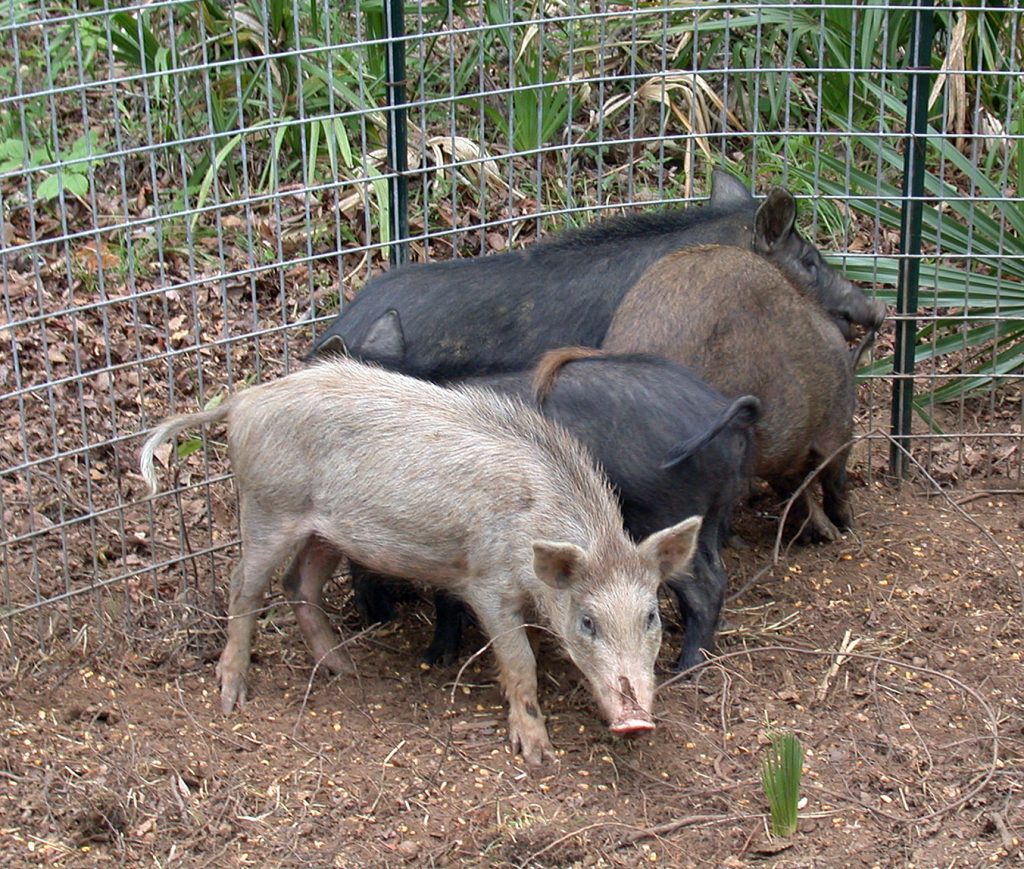
Hogs aren’t picky about what they eat, but they eat a lot of food. Many hog trappers like to “prebait” traps by baiting them while leaving the door open and the trigger mechanism disengaged. This allows the whole sounder to become comfortable with entering the hog trap, but it also means you go through a lot of bait. Whatever you choose, make sure that you have an abundance of it. It’s ideal to have enough in the hog trap so that as many pigs as possible can eat at once before triggering it.
How Often Should You Check A Hog Trap
As a final note,Buckley reminds would-be trappers that under Alabama law, hog traps must be checked once every 24 hours. He advises checking them in the cool of the morning in order to prevent heat distress and the resulting increased escape attempts. After all the investment of time and money into building, baiting, and checking traps, you definitely don’t want them back out on your property!
Hog Trapping FAQs
What are some common mistakes when setting hog traps?
When attempting to set hog traps, there are several common mistakes that people make. Being aware of these mistakes can help you avoid them and increase your chances of successful hog trapping. Here are some common pitfalls to watch out for:
- Inadequate Hog Trap Placement: Placing the hog trap in the wrong location is a common mistake. It’s essential to understand the hogs’ behavior patterns, feeding areas, and travel routes to determine the best trap placement. Placing hog traps too far from their activity areas or failing to consider wind direction and cover can result in low trap success.
- Poor Hog Trap Construction: Building a subpar or unstable hog trap can lead to failures. Weak or improperly secured hog trap materials can allow hogs to escape or avoid entering the hog trap altogether. It’s crucial to construct sturdy hog traps using appropriate materials and follow proven designs or guidelines.
- Incorrect Baiting Techniques: Baiting plays a crucial role in attracting hogs to the hog trap. Some common mistakes include using insufficient bait quantities, not replenishing bait regularly, or using ineffective or spoiled bait. Proper baiting strategies, such as using fresh, aromatic bait and maintaining a consistent bait presence, are vital for enticing hogs into the hog trap.
- Ignoring Hog Trap Maintenance: Neglecting hog trap maintenance can lead to malfunctioning hog traps or hogs becoming trap-shy. Failing to regularly inspect and repair hog traps can result in weakened or damaged components that hogs can exploit. It’s important to routinely check traps, repair any damages promptly, and ensure traps remain in optimal working condition.
- Lack of Patience and Persistence: Hog trapping requires patience and persistence. Some individuals may give up too quickly if they do not see immediate results. It’s important to understand that hogs can be wary and may take time to become accustomed to the hog trap. Consistent trapping efforts, regular monitoring, and adjusting strategies are key to success.
- Inadequate Safety Measures: Safety should always be a priority when trapping wild hogs. Failing to follow safety protocols, such as not wearing protective gear or underestimating the strength and unpredictability of trapped hogs, can lead to injuries. It’s essential to use appropriate safety equipment, practice safe handling techniques, and seek professional help if needed.
- Lack of Knowledge and Preparation: Insufficient understanding of hog behavior, hog trapping techniques, and local regulations can hinder hog trapping success. It’s important to educate yourself about wild hog biology, trapping methods, and any legal requirements or restrictions in your area. Being well-prepared and knowledgeable can help you make informed decisions and avoid unnecessary mistakes.
By avoiding these common mistakes and implementing effective trapping strategies, you can increase your chances of successful hog trapping. Consulting with experienced trappers, wildlife management professionals, or local authorities can provide valuable insights and guidance specific to your area.
Can you eat hogs caught in a hog trap?
When it comes to consuming wild hog meat, there are a few factors to consider:
Wild hogs can carry diseases and parasites, some of which can be transmitted to humans. Diseases like brucellosis, trichinosis, and leptospirosis are a concern. To mitigate these risks, it’s important to handle the meat properly and follow food safety guidelines. Wearing gloves while field dressing the animal and thoroughly washing hands and equipment afterward is recommended. Additionally, cooking the meat to a safe temperature is essential for killing any potential pathogens. It’s advised to cook wild hog meat to an internal temperature of at least 160°F (71°C) to ensure safety.
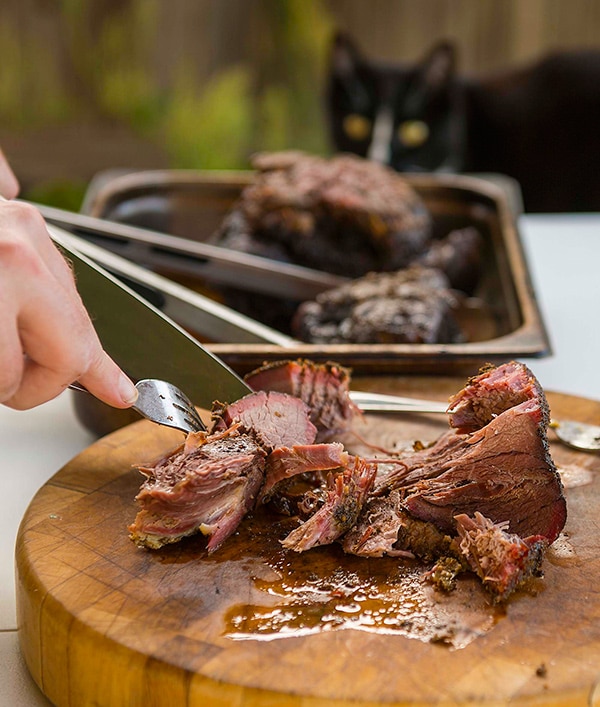
Wild hog meat also differs from domestic pork in a few ways. Wild hogs tend to have leaner and darker meat, which can result in a different texture and flavor. The meat is typically leaner due to the animals’ active lifestyle and varied diet. Consequently, wild hog meat can be tougher and may require different cooking techniques to ensure tenderness. Marinating the meat before cooking or using moist cooking methods such as slow-roasting, braising, or stewing can help tenderize it. The flavor of wild hog meat is often described as stronger and gamier compared to pork, with some people enjoying its distinctive taste while others may find it too intense.
How do you dispatch a hog caught in a hog trap?
When dispatching a hog before butchering, the objective is to deliver a well-placed shot that ensures a quick and humane kill. The ideal shot placement on a hog may vary depending on factors such as the size of the animal, distance, and the available shooting angles. Here are some recommended target areas:
Brain: A well-placed shot to the brain is the most effective and humane method for dispatching a hog. The target area is the forehead, aiming between the eyes and slightly above the midpoint of the head. The objective is to hit the brain, specifically the cerebral cortex, which ensures a quick and painless death. This shot requires accuracy and precision, and it’s essential to use a firearm and ammunition that can reliably penetrate the skull.
Heart/Lung Area: Targeting the heart/lung area is another effective method for a quick and humane kill. The target area is located behind the shoulder, slightly lower and forward of the shoulder blade. Aim for the center of the chest cavity. This shot aims to penetrate the vital organs, causing rapid blood loss and organ damage. It is important to use a firearm and ammunition with sufficient power to penetrate the hog’s tough hide and reach the vital organs.
Neck: A shot to the neck can be effective for severing the spinal cord and quickly incapacitating the hog. The target area is the base of the neck, just behind the ear, where the spine connects to the skull. A well-placed shot to this area can cause immediate paralysis and prevent the hog from moving or causing further harm. It requires precision, as the target area is relatively small. Again, use appropriate ammunition and firearm to ensure sufficient penetration.
Remember, shot placement should always prioritize the quick and humane dispatching of the animal. It is important to consider the size of the hog, the available shooting angles, and to adjust your shot accordingly. Practice shooting skills, ensure a clear line of sight, and follow all safety guidelines and local regulations when dispatching a hog.
How to butcher a hog caught in a hog trap?
Butchering a wild hog involves several steps and requires some knowledge and skill. Here’s a general outline of the process:
Field Dressing: After dispatching the wild hog, the first step is to field dress it. This involves removing the internal organs to cool down the carcass and prevent spoilage. Here’s a basic guide to field dressing a wild hog:
- Place the hog on its back and locate the anus.
- Make a shallow incision around the anus and cut the surrounding tissue.
- Cut up towards the rib cage, making a straight incision through the skin and muscle.
- Carefully remove the organs, being cautious not to puncture them.
- Cut the diaphragm to free the organs completely.
- Check the chest and pelvic cavity for any remaining organs or debris.
- Rinse the cavity with clean water and pat it dry.
Skinning: Once the hog is field dressed, you can proceed with skinning it. Skinning can be done using a skinning knife or a combination of a sharp knife and a gambrel or hoist to hang the carcass. Here’s a general approach:
- Make an incision along the belly, from the base of the neck to the anus.
- Using a combination of knife work and pulling, carefully separate the skin from the underlying meat, working your way down each side of the hog.
- Continue skinning the animal, being cautious not to damage the meat or puncture any organs.
- Once the skin is completely removed, set it aside for further processing or disposal.
Butchering: With the hog skinned, you can start breaking it down into manageable cuts of meat. The specific cuts will depend on your personal preference and intended use. However, here are some common cuts you may consider:
- Ham: The hindquarters can be separated into two large cuts known as hams.
- Shoulder: The front shoulders can be removed as individual cuts.
- Backstrap: The long, tender muscles that run along the spine on either side are called backstraps. These are highly valued cuts.
- Ribs: The rib section can be separated into individual rib cuts or left as a rack.
- Belly: The belly can be left intact for bacon or cut into smaller pieces.
- Trimmings: Trimmings can be used for ground meat or sausages.
It’s important to use a sharp knife and maintain proper hygiene throughout the process. If you’re new to butchering, it can be helpful to watch instructional videos or seek guidance from experienced hunters or butchers.
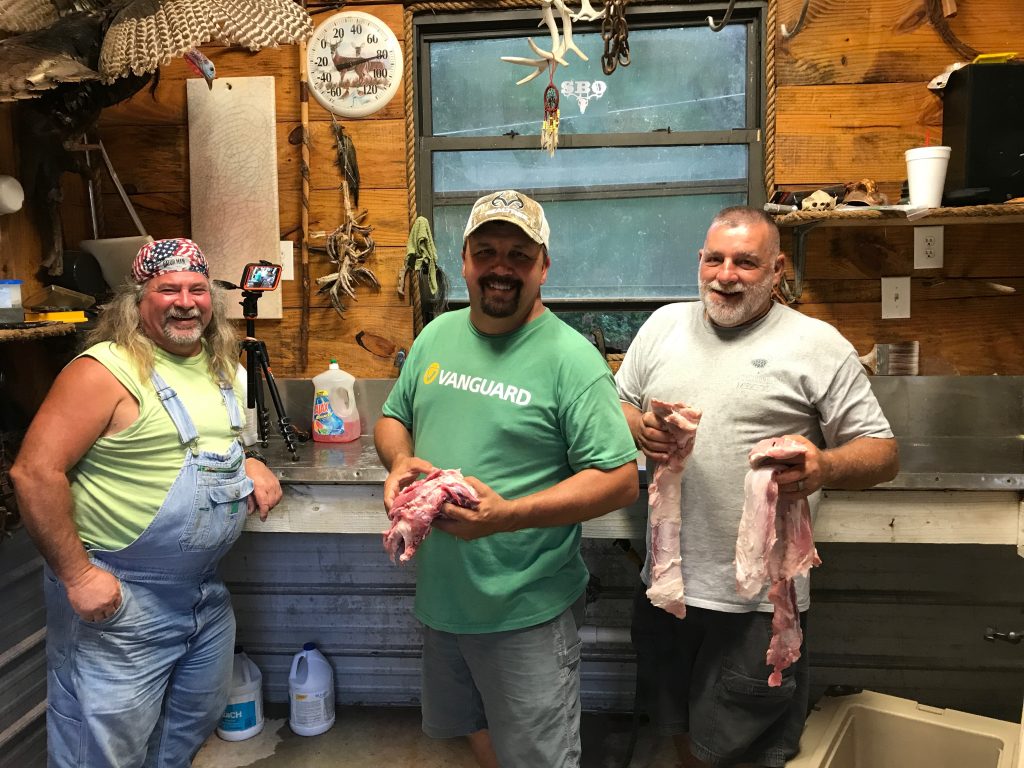
Remember to follow local regulations and guidelines regarding the handling and transportation of wild game, as these can vary depending on your location.
Are wild hogs dangerous?
Wild hogs can be potentially dangerous under certain circumstances. While they are generally wary of humans and try to avoid contact, there are situations where they may become aggressive or pose a threat:
Protecting Their Young: Female wild hogs are fiercely protective of their piglets, especially during the early stages. If they perceive a threat to their offspring, they may exhibit aggressive behavior. This can include charging, slashing with their tusks, or engaging in bluff charges to intimidate potential threats.
Cornered or Trapped: When wild hogs feel cornered or trapped, they can become highly defensive and may act aggressively to protect themselves. This can occur if they are wounded, confined in a small space, or have limited escape routes. In such situations, they may exhibit aggressive behaviors like charging, biting, or using their tusks. This is important to keep in mind when checking your hog traps.
Aggravated or Provoked: Wild hogs generally have a natural aversion to humans and try to avoid contact. However, if they are startled, provoked, or feel threatened, they may become defensive and behave aggressively. Approaching them too closely to the hog trap, getting between a sow and her piglets, or engaging in behaviors that startle or aggravate them can trigger aggressive responses.
Disease Concerns: While not directly related to aggression, it’s important to be aware that wild hogs can carry diseases and parasites. Some of the diseases they can carry include brucellosis, leptospirosis, trichinellosis, and pseudorabies. Although the risk of disease transmission to humans is generally low, precautions should be taken when handling wild hog carcasses or coming into contact with their bodily fluids. Wearing protective gloves and properly cooking the meat can help mitigate these risks.
Where did feral hogs come from?
Feral hog populations often originated from domestic pigs that either escaped from farms or were deliberately released into the wild. Domestic pigs, which are descendants of wild boars, were brought to different regions by humans for various purposes, including agriculture, food, and hunting. Over time, some of these domestic pigs managed to escape their enclosures or were purposely set free. Once in the wild, they adapted to the new environment, reverted to a more wild-like state, and formed feral populations.
In certain cases, feral hogs were intentionally introduced to new regions by humans. This occurred for several reasons, such as establishing a new food source, providing game for hunting, or addressing the absence of large mammals in certain ecosystems. Settlers, explorers, or hunters brought feral hogs to these areas with the intention of establishing a self-sustaining population. Unfortunately, the lack of natural predators, combined with the hogs’ high reproductive rates and adaptive behaviors, often led to uncontrolled population growth and ecological disruption.
Wild boars, the ancestors of domestic pigs and feral hogs, have a native range that includes parts of Europe, Asia, and North Africa. In regions where wild boars are native, feral hog populations can arise from the natural range expansion of these wild boar populations. For example, in areas where wild boars were already present, the introduction of domestic pigs or their hybridization with wild boars contributed to the establishment of feral hog populations.
Due to their highly adaptable nature, feral hogs have become a problematic invasive species in many parts of the world. They cause significant damage to agricultural crops, natural habitats, and ecosystems. As a result, feral hog management and control efforts are necessary to mitigate their negative impacts and minimize their spread.
Final Thoughts On Hog Trapping
In conclusion, trapping wild hogs is a crucial and effective method for managing feral hog populations. Understanding the behavior and characteristics of these resilient animals is essential for successful trapping. By selecting appropriate hog traps, employing proven baiting strategies, and implementing humane and responsible hog trapping techniques, landowners and wildlife managers can significantly reduce the negative impact of feral hogs on ecosystems, agriculture, and property.
Trapping hogs requires patience, persistence, and ongoing monitoring, but the rewards are worth the effort. By working in collaboration with experienced trappers, following local regulations, and prioritizing safety, we can work towards effective hog population control, ecological restoration, and the preservation of our natural resources. With responsible trapping practices, we can better manage wild hog populations and create a healthier, balanced environment for both humans and wildlife.
Full Disclosure: This post may include affiliate links. There’s no extra charge to our readers for using these.


